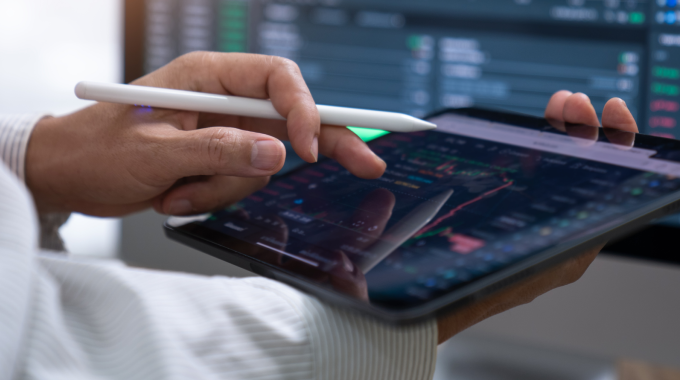For those with a pulse on the private and public markets, it’s nearly impossible to scan a newsfeed without seeing yet another SPAC (special purpose acquisition company) has formed. Often with a well-known or celebrity sponsor, SPACs are to the financial markets what podcasts are to the media – while everyone seems to have one, only a small percentage will be worth listening to.
SPACs have been around awhile, but as of late, they’re exploding. Around 200 SPACs went public in 2020, raising about $64 billion in total funding, with companies such as Virgin Galactic, DraftKings, Opendoor and Nikola Motor Co. that all went public via SPAC. SPAC sponsors are going mainstream, too – from venture investor Vinod Khosla, who just announced three SPACs, to former NFL quarterback Colin Kaepernick and retired MLB star Alex Rodriguez, who both recently announced they were sponsoring SPACs.
23andMe, Bird, SoFi, WeWork and others all recently announced either exploratory or intended SPAC mergers. 23andMe is pursuing a public listing through a reverse merger with Richard Branson’s VG Acquisition Corp.; the transaction would flush 23andMe with $984 million in cash, which would be available at close and will value the company near $3.5 billion.
But whether there are enough public-ready private companies to satisfy the deluge of SPAC capital seeking a landing pad is unclear. Most market-oriented observers agree there will be several D-list performers for every one Academy Award-level SPAC – or 100 no-name, no-interest podcasts to every one Dax Shepard’s Armchair Experts.
Lifecycle of a SPAC
A SPAC is a blank check or shell company that conducts an initial public offering (IPO) to raise funds for use in a future business transaction, often acquiring or merging with a private company that is looking for an alternative, faster path to going public from the traditional IPO.
Once the SPAC identifies a private company (or operating business) to merge with or acquire, there’s a period of time to privately negotiate valuation, and during which investors can also decide whether to stay in or opt out based on whether they think the transaction will be successful. This in-between period is known as “de-SPACing.” And during that de-SPACing period, PIPE (Private Investment in Private Equity) investors are invited to join the round, which can increase the amount of capital the soon-to-be-public entity raises upon its public debut. Then, the operating business becomes a publicly traded company that “takes over” the public company status of the SPAC, and the SPAC is officially “de-SPACed.”
Much of the buzz around SPACs can be tied back to a few successful reverse mergers, including online casino gaming provider DraftKings that went public via SPAC in 2020. According to Bloomberg Law, in May 2019, a SPAC IPO by Diamond Eagle Acquisition raised $350M on units priced at the standard $10, then struck a deal to acquire DraftKings. On the combined business’s first day of trading on April 24 2020, shares traded at around $20. Less than two months later, the stock reached an intra-day high of $44.79 in June, a nearly 450% increase in 13 months. The impressive returns realized by investors created excitement for both DraftKings and for SPACs.
All eyes on the private market
But the sheer volume of SPAC money chasing private companies to acquire means there’s a real risk that some SPAC mergers end up going bust. A number of companies that are considering SPACs as their route to the public market may be doing so because they have not been able to raise private capital from investors – meaning companies aren’t growing fast enough alone and aren’t able to achieve desired private capital support.
But, as a result of the SPAC boom (with over 330 SPACs currently seeking a target), some of these private companies will leapfrog into unicorn status. This could amplify SPAC popularity even further for the companies that don’t want to stay private for several more years but rather want liquidity and access to public currency now.
WeWork, as just one example, is currently in talks to combine with a SPAC (after it failed to stage a traditional IPO over a year ago) – a deal that would provide a potential valuation of nearly $10 billion. It was reported that the company also has received separate offers for a new private investment round, and if it goes that route, the company would likely stay private longer.
On the private markets, there are opportunities emerging for investors to participate in SPACs, during the de-SPACing process. Between the announcement of a SPAC partnership and when the operating company goes public, equity holders can sell shares in anticipation of the public listing, and investors who have an appetite to get in early at growth inflection points can do so. The benefits to employees of the soon-to-be public SPAC allow them to avoid the lock-up period generally assigned to employee stock, and investors who missed the opportunity to get in on the SPAC itself still can benefit from the potential jump in valuation on the SPAC debut.
As companies assess their potential pathways to the public market, it’s important to consider all options – and the benefits and shortcomings of each. Just as podcasts aren’t our only source of information and entertainment, this SPAC boom won’t be the best avenue for every private company looking to go public.



